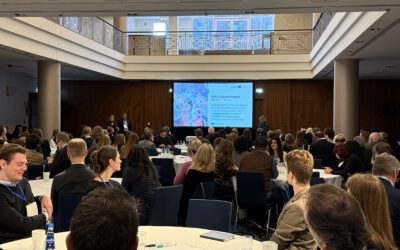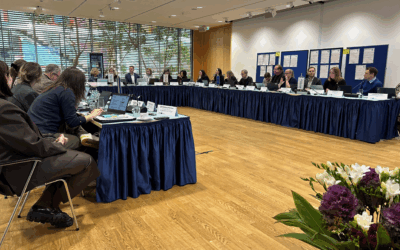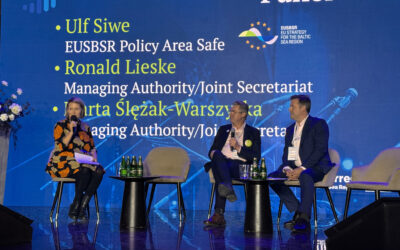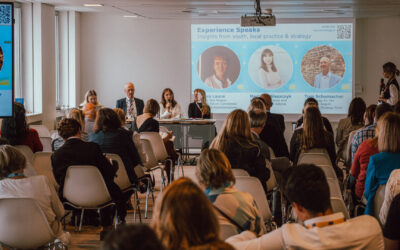Cruise shipping in the Baltic Sea region has grown enormously. In 2018, the number of cruise guests visiting destinations at the Baltic Sea was almost five times higher than in 2000 and the boom is expected to last at least. More passengers means more jobs and growth for the port locations and their hinterland. For 2015 the Maritime Institute in Gdansk estimated the total annual turnover of cruise passengers and crew members in BSR cruise ports of more than EUR 400 million and an employment effect of up to 11,500 jobs. Ports, shipping lines and tourism organizations are not only aiming to further strengthen the industries’ economic performance, but also to observe sustainability. This is what the project Green Cruise Ports pushes for.
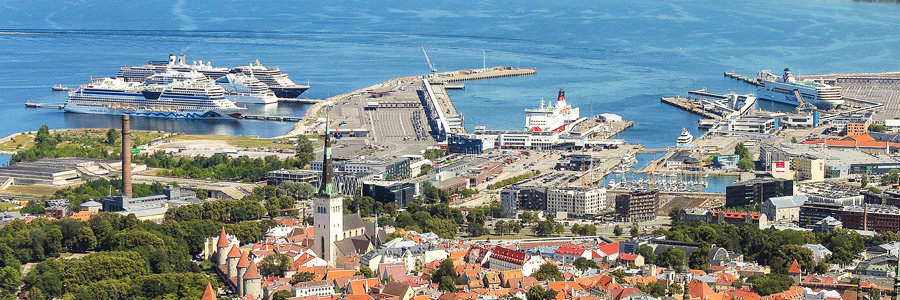
The port of Tallinn received numerous cruise ships ©Port of Tallinn
After the Mediterranean, the Baltic Sea is the busiest area for cruise tourism with popular destinations such as Stockholm, Riga, Helsinki and St. Petersburg. Cruise tourism offers many opportunities to Baltic cities, with many experiencing the economic impact on their local economies. Cruise tourism has downsides for the environment, however. Most large cruise ships run on heavy diesel oil, emitting large quantities of carbon dioxide, NOx and sulphur, which cause harm by contributing to air pollution and climate change. Additionally, passenger streams cause challenges for superstructures and infrastructure in cruise ports, mainly cruise terminals and access roads. Inefficient waste management and traffic congestion are some of the widely-recognized problems.
Ports collaborate
The Interreg Green Cruise Ports project tries to tackle these problems by combining the forces of nine port authorities of Baltic Sea ports. The ports of Bergen, Esbjerg, Hamburg, Rostock, Gdansk, Klaipeda, Riga, Tallinn and Helsinki, along with other partners including cruise liners, all participate in this initiative. The initiative’s main goal is to form a common platform that guides the implementation of more sustainable solutions for the cruise industry. Green Cruise Ports focuses on three policy areas: sustainable energy supply, innovative reception facilities and smart cruise port traffic solutions.
To be better than directives
The coordinator and initiator of the project is Hamburg Port Authority. Mr. Ingo Fehrs, the project manager of Green Cruise Ports at Hamburg Port Authority, explains the idea behind cooperating together with other port authorities in the region: “Every port has the same issues, so why should one port find all the solutions? We know all ports are working on it, and the idea was to have a partnership.” The push for sustainable solutions is above all a choice of ports and the cruise industry itself, says Fehrs: “Of course European Directives about emissions play a role, but we want to be even better.”
Finding fuels for the future
One of the main issues that port authorities as well as cruise liners are working on is preparing cruise ships and terminals for the fuels of the future. The move from heavy diesel oil to more sustainable options is inevitable – the question is how and when it happens. Alternatives include using more distilled fuels like marine diesel oil and marine gas oil with lower sulphur percentages, liquefied natural gas (LNG) and methanol. Adding scrubber systems to existing engines for the cleaning of exhaust gases is another option. Until now, there is no industry standard or ready-made solution, but different approaches are being used. Fehrs: “It is too early to conclude which solution is best. We can’t say: one solution fits all. But the cruise industry has the opportunity to function as a pilot, as an example for the whole shipping industry. The whole shipping industry has to work on it, but the cruise industry experiences more pressure from communities and customers and could become frontrunners.”
Greening cruise terminals
Apart from sustainable fuels, ports are also considering measures for hard structures like cruise terminals. The Port of Tallinn is in the process of building a brand new terminal building. Authorities are seeking innovative solutions of how to make the building ‘green’ and integrate it into the port and the surrounding city. Other ports in the Baltic Sea region could learn from Tallinn’s experiences and adopt best practices. The added value of transnational cooperation, thus, is that others can learn from the frontrunners’ experience.
Preparing for future challenges through collaboration
By being an innovative catalyst which triggers investments into sustainable solutions, Interreg helps port authorities across the Baltic Sea to counteract negative side-effects of cruise tourism on the environment and society. Above all, Interreg helps the cruise sector in the Baltic Sea region to prepare for the future. Fehrs points out the importance of Interreg funding: “Without financial aid and expertise, I doubt we could have ever produced this partnership.” In the future, the aim is to also include the Russian port city of Kaliningrad. Cruise tourism is still developing in the region. And strong partnerships prepare the cruise industry for future challenges.
Article by Mike Ummels based on interviews with Ingo Fehrs (Hamburg Port Authority and Hans-Ullrich Wolf (Wissenschaft & Praxis marine).



